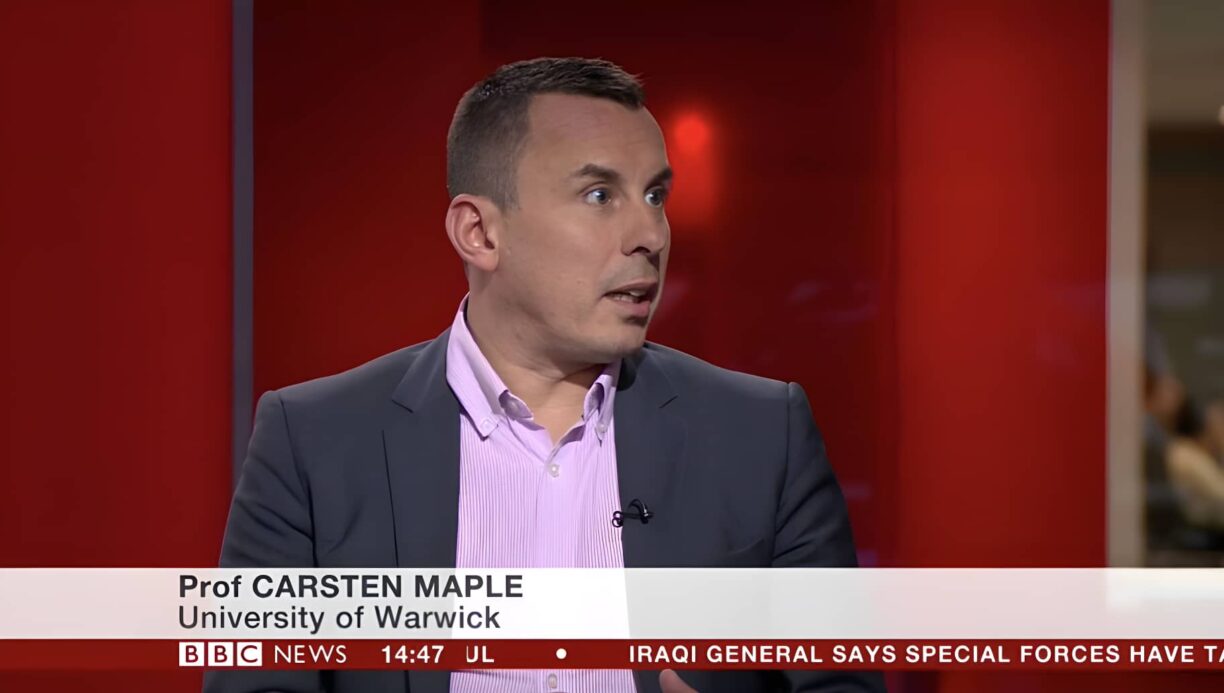It starts innocently enough—your toddler grinning at the beach, the first wobbly bike ride, or a birthday cake bigger than their head. But in the race to document every milestone, parents across the UK are unintentionally exposing their children to alarming risks.
The risks of oversharing online photos have quietly snowballed into a modern crisis—one that tech experts say could follow your child long after the candles are blown out and the icing’s been wiped from their cheeks.
In fact, it takes just 20 photos to build a disturbingly realistic online profile using artificial intelligence. That’s the chilling warning from Professor Carsten Maple, a leading cybersecurity expert from the University of Warwick and the Alan Turing Institute.

“Parents are unwittingly opening their children up to possible exploitation by criminals who want to use their data for their own purposes,” he says. “It takes just 20 images for sophisticated AI tools to create a realistic profile of someone, or even a 30-second video.”
Let that sink in. Before your child even opens their first email account, cybercriminals may already have a dossier on them—assembled from the snapshots you thought were just heartwarming keepsakes.
The Digital Footprint We Don’t See
Commissioned by the privacy-first firm Proton, new research among 2,000 UK parents reveals that the nation’s mums and dads are uploading a staggering 63 photos to social media every single month. Nearly 60% of these are family shots. It’s the digital equivalent of wallpapering the internet with your private life—and most of us have no idea who’s looking.
“It’s not just criminal gangs,” Professor Maple adds. “Big tech companies frequently use consumer data for their own devices – whether it be creating advertising profiles for targeted marketing, selling data to third parties, analysing photo content, trends, and usage patterns.”
Earlier this year, Instagram quietly updated its user agreement to permit using posted images for training its own AI models. The result? Your cherished memories may be fuelling a faceless algorithm.
Cloudy with a Chance of Breaches
The risks of oversharing online photos don’t end at social media. An overwhelming 56% of parents have their family photos auto-uploaded to cloud storage.
That translates to an estimated 185 pictures of children living in both their phones and the digital ether. Yet, 48% admit they had no idea these services could access and use the images themselves.
In fact, 43% think cloud providers only collect metadata, while nearly a third (29%) believe the companies only see basic account details. Alarmingly, over 1 in 10 parents admit they have no idea what these platforms are doing with their family’s data.
Given that 94% of parents want greater transparency from cloud providers, it’s clear there’s a disconnect between what families expect and what tech giants deliver.
From School Plays to Scam Targets
Professor Maple isn’t scaremongering. He’s citing real, documented cases. One UK cybercrime ring used publicly posted information to send phishing scams to parents, posing as schools requesting money for fake emergencies. Another mimicked teacher emails to steal financial information.
“With the rise of digital data sharing and data breaches, the need for stronger protections has never been more pressing,” he warns.
It’s not just today’s fraud we need to worry about—it’s tomorrow’s. Once your child turns 18, their pre-built digital identity could be hijacked for financial gain, social manipulation, or worse.
Are You Sharing More Than You Realise?
Beyond hacking concerns—something 81% of parents admit they worry about regularly or occasionally—many are taking action. A good 63% rely on Face ID, while over half use PIN codes and keep their phones updated. But that’s barely scratching the surface.
Professor Maple has laid out a checklist of real-world advice—because prevention is the only surefire antidote in a world where data, once out there, is nearly impossible to erase.
Professor Maple’s Tips to Keep Your Child’s Data Safe
- Think before you share: Even seemingly harmless posts can build a detailed profile. From birthdays to school uniforms, every detail adds up.
- Choose encrypted storage: Services like Proton Drive offer end-to-end encryption, unlike most cloud storage platforms that profit from your data.
- Adjust privacy settings: Every app and device has them—use them. Tighten security before your child starts gaming or using social media.
- Watch for phishing scams: Be sceptical of any unsolicited messages, especially those claiming to be from your child’s school.
- Avoid public Wi-Fi: Teach kids not to connect without protection—it’s a hotspot for hackers.
- Set digital boundaries: Discuss what’s okay to share and what isn’t. Awareness is the first defence.
- Use parental controls and search filters: They won’t block everything, but they reduce the risk of accidental exposure.
- Install antivirus software: Malware can turn a device into a surveillance tool for scammers.
- Be the example: Children model what they see. Practise what you preach when it comes to online caution.
We live in a time where posting a photo feels harmless—normal, even. But the risks of oversharing online photos aren’t theoretical anymore. They’re real, they’re multiplying, and they’re lurking behind every filtered smile and hashtagged milestone.
So next time you reach for your phone to post that cute moment online, ask yourself: who else might be watching?





